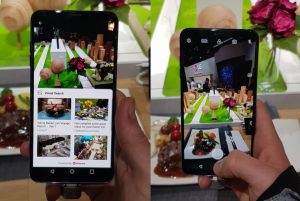LG bowing out of the mobile phone space might not actually be very newsworthy for a lot of people.
Although they enjoyed a heyday at the start of the smartphone revolution, peaking at 10% market share in 2009, the brand famed for innovative designs and ideas couldn’t maintain those sales in the face of the bigger marketing budgets and brand recognition of Samsung and Apple respectively.
That could be the story in a nutshell. As Samsung and Apple gained popularity LG’s focus on innovation meant that their great ideas were masked by devices that didn’t do the simple things well enough and were expensive to produce. But it always felt like there was something more to LG and how they struggled in the modern smartphone market.
Innovation
Trying to be the first is an admirable policy when it comes to R&D, but to push boundaries LG had to come from a position of strength.
In the time that LG operated in the market, they had a crack at flexible phones, modular designs, gestures (as seen on Google’s Pixel 4 device), vein identification, and brought to consumers their own take on a foldable design.
To compare the innovations from their dominant counterparts, Samsung have managed to develop folding technology for phones and worked out under screen fingerprint readers whereas Apple have mastered facial recognition and poured a lot of time and effort into interoperability between iPhone, iPad and Mac devices to great success.
The latter has an ecosystem that locks people into their devices and, unless they are willing to give up the purchase history of albums, film, TV shows and applications for an innovative change they will be hard to prise away from an iPhone purchase. Similarly, Samsung has built up an ecosystem and entered into the interoperability realm, but their dominance comes from a consistently high standard of device that has only been challenged by the entrance of Chinese manufacturers.

Lack of Focus
For LG, there was no ecosystem and so they were reliant on the quality of their devices. But in developing innovative features, there was no real substance to their phones.
I have reviewed LG devices in the past and they were very good but they never blew me away when I remembered the flagship price point. Especially in comparison to Samsung, with the best camera, the quickest internals as well as new, and more importantly, practical innovations at the same price point.
In many ways that was the difference for a long time, Samsung had a focus on being the best Android device, to massive success, but LG had a wayward approach to how they would produce sales. Innovations around modular designs were only picked up by Motorola, bendy phones seemed to be a troll of the iPhone debacle around the same time. In fact, the only clear USP that the devices contained was a headphone jack with a digital audio converter (DAC) for better sound quality through headphones, at a time when Apple and Samsung were ditching the hole in the phone and focussing on their own range of bluetooth earbuds.
In all, the sheer lack of consistency drove away any loyal LG fans, although the device had some great features, there was no guarantee that they would come back year to year. And then CHINA HAPPENED!
The final chapter
LG’s business may well have been sustainable at the level of competition seen in 2015. Bear in mind that HTC was fading into the background and Sony were pumping money into a mobile division that wasn’t making any money. The competition was lacking and LG was a comfortable second; albeit a long way off first.
But the entrance of Huawei and a host of other Chinese manufacturers spelt the end for LG. Added competition is hard to compete with but the likes of the P10 from Huawei and OnePlus opening their devices up to the mass market meant that LG were beaten on all fronts.
Unfortunately we will see LG as one of those manufacturers that trod water throughout their time. They are the last of the smartphone trailblazers to bow out of the market and, although they provided many features we see in our devices today, a lack of consistency and inability to provide a competitive price point, meant that LG would never see success in the modern smartphone market.
Thanks for reading this article, please continue to support us and check out our other reviews and follow us on Social media: Facebook, Twitter, Instagram, Linkedin and don’t forget to sign up for our newsletter below.










I remember the days when the LG Chocolate Phone and the Viewty dominated the market!!
Absolutely, The LG Chocolate was seeded to us as managers at Carphone Warehouse. As sleek as they were, they were also a nightmare but looked great! The Viewty was also a great premium feeling device!